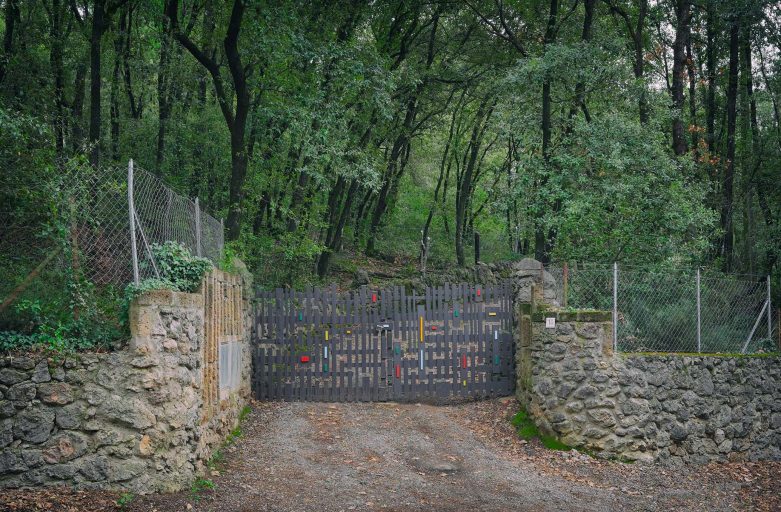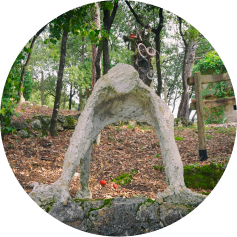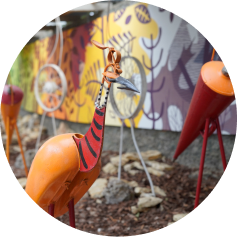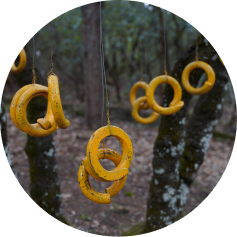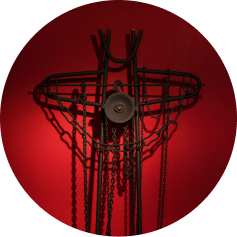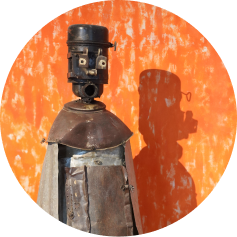
Antropomorfi, 1964
Anthropomorfi, 1964
Tanks of old motorbikes turn into an orchestra of wind instruments. The creativity of Brajo Fuso makes the visitor feel free to identify with these characters. Suddenly, the location turns into a theatre where they improvise a lively show.

Cancello giallo (The yellow gate), 1962
Cancello giallo (The yellow gate), 1962
Entering the Fuseum is like entering a world made of art and dreams. The yellow gate of the entrance road was designed by Brajo Fuso in 1963, together with the walls surrounding the various scraps in the area, like stones and concrete. Everything is joyful, colourful, with irregular shapes, and it is deeply hidden in the beauty of an oak forest where nothing is as it seems.

Cancello nero (The black gate), 1964
Cancello nero (The black gate), 1964
The secondary entrance to the Fuseum is characterised by a black iron gate with a regular shape. This has been made during the rational artistic period of Brajo Fuso, in which he made the Legni collection. In this period, the artist interchanges two different styles: a creative one (spontaneous, with no schemes) and a regular one with strict geometric features.

Wheelbarrow
Wheelbarrow
A simple wheelbarrow becomes a sculpture. From the profile view, a head, a prominent body shape, arms and legs can be seen. Brajo Fuso’s imagination has no limits and he shows, with this artwork, that he has a native capacity to personify objects.

Custode (The guardian), 1960
Custode (The guardian), 1960
It only takes some concrete and wire mesh to build statues with human features. The artist asks the visitor to take a seat next to the statue and feel free to identify himself with this artwork, in a space suspended between reality and fantasy.

I cappelloni, 1965
I cappelloni, 1965
A fairy tale world, with mushrooms made of stones and recycled objects sprouting from the undergrowth. This is a demonstration of the artistic freedom of Brajo Fuso.

Working for peace
Working for peace
This sculpture is composed of elements resembling the human body, (hands, arms, heads) together with artificial elements, such as pipes, metal foils and wrecked cars. It expresses a strong desire for playfulness. Bodies in the sculpture are twirling and guide the visitor through the magic features of a childlike world, free from the horrors of war.

Plastic, 1958
Plastic, 1958
Brajo Fuso uses the Ready-Made technique, converting everyday objects into artworks. In this case, plastic hydraulic pipes recall wind instruments and, using these empty pipes, the wind plays the symphony of nature.

